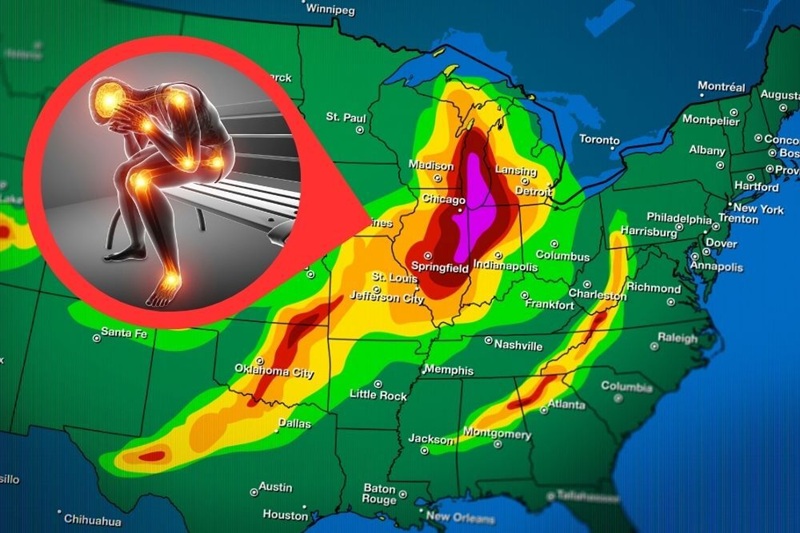Ever notice your knees ache more before it rains or your joints stiffen up when it gets cold? You’re not imagining it. Research shows that changes in barometric pressure, temperature, and humidity can influence how your joints feel—especially if you live with arthritis or chronic joint discomfort. Understanding the connection between weather and joint pain can empower you to take proactive steps to feel better year-round.

How Weather Affects Your Joints: What the Science Says
🔍 Barometric Pressure Drops = Joint Swelling
When barometric pressure falls (as it often does before a storm), there’s less atmospheric force pressing against your body. This can cause tissues around your joints to expand, increasing pressure and pain in already-sensitive areas—especially in knees, hips, and fingers [1].
❄️ Cold Temperatures Stiffen Synovial Fluid
Colder weather can reduce circulation and thicken the fluid that cushions your joints, making them feel stiffer and more resistant to movement [2].
💧 Humidity Can Aggravate Inflammation
High humidity levels, especially when paired with cooler temperatures, are associated with increased joint stiffness and swelling. According to joint pressure studies, humid, cold, and low-pressure weather patterns correlate strongly with pain spikes in osteoarthritis sufferers [3].
Who’s Most Affected?
- People with osteoarthritis or rheumatoid arthritis
- Individuals recovering from joint surgeries or injuries
- Seniors over 60 with decreased muscle and tendon elasticity
- Anyone with chronic joint inflammation or stiffness
Practical Ways to Weather-Proof Your Joints
1. Keep Joints Warm
Use heating pads, warm showers, or wear compression sleeves to increase blood flow and reduce stiffness in colder months or during temperature dips.
2. Stay Gently Active
Avoid immobility. Try low-impact movement like:
- Walking indoors
- Yoga or tai chi
- Swimming in heated pools
3. Prioritize Anti-Inflammatory Nutrition
Incorporate foods rich in:
- Omega-3s (e.g., salmon, flaxseed)
- Antioxidants (e.g., berries, leafy greens)
- Spices like turmeric and ginger
4. Track Weather Patterns
Some arthritis foundations offer mobile apps or online tools that predict flares based on your local weather—allowing you to plan ahead with extra support on high-risk days.
Don’t let the weather dictate your comfort.
Simple habits, smart nutrition, and consistent support can make a big difference in how your joints respond to seasonal swings.
References
- Wang, L.; Xu, Q.; Chen, Y.; Zhu, Z.; Cao, Y. Associations between Weather Conditions and Osteoarthritis Pain: A Systematic Review and Meta‑Analysis. Annals of Medicine 2023, 55 (1), 2196439. https://www.ncbi.nlm.nih.gov/pmc/articles/PMC10120534
- Pan, H.; Shen, Z.; Chen, Q.; Jiang, R.; Wang, Y. Effect of Cold on Knee Osteoarthritis: Recent Research Status. Frontiers in Physiology, 2022. Published May 20, 2022. https://www.degruyter.com/document/doi/10.2478/fzm-2022-0010/html
- Arthritis Foundation. Best Climate for Arthritis: How Changes in Pressure Affect Your Joints. arthritis.org, 2024. https://www.arthritis.org/health-wellness/healthy-living/managing-pain/understanding-pain/best-climate-for-arthritis





